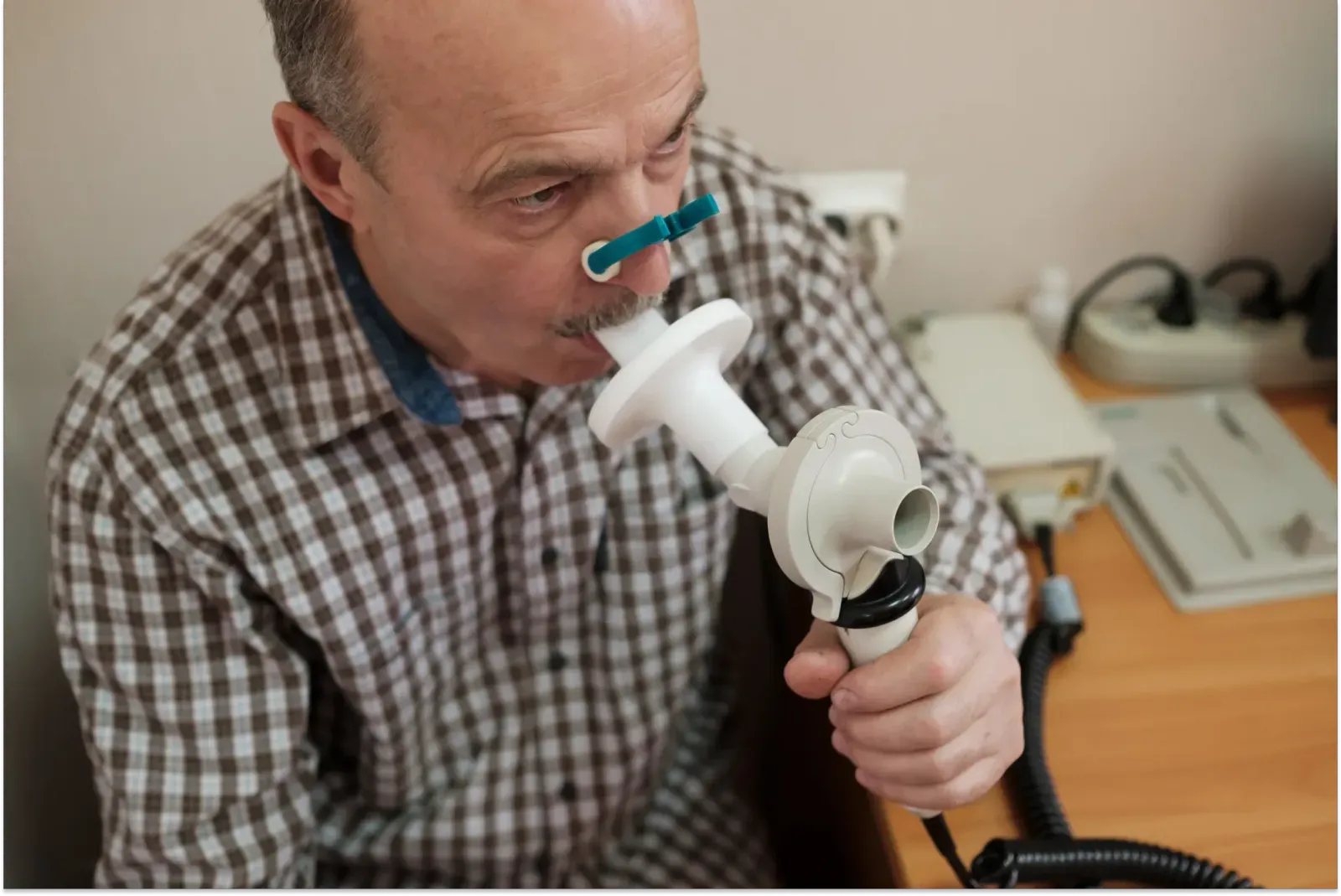
They called it simple. Just breathing into a tube. But that didn’t explain how it would feel. The waiting room was quiet. She glanced around. Everyone else looked calm. She wasn’t. She wasn’t sure why.
Just breathing into a tube
The technician explained each step. Sit still. Take a deep breath. Blow hard. Hold it. Repeat. She nodded, pretending it made sense. The machine looked harmless. But the mouthpiece felt strange. Too wide. Too unfamiliar.
The mouthpiece felt strange
It pressed against her lips. Her throat tightened. She tried to focus. Inhale. Exhale. But her lungs didn’t follow commands easily. The technician said, “Try again.” So she did. Again. And again.
Try again. So she did
Each breath had a number. A curve. A chart. The screen showed lines she couldn’t understand. But the technician kept watching. Taking notes. Saying nothing.
The screen showed lines she couldn’t understand
It wasn’t pain. It was pressure. Inside her chest. A reminder that breath isn’t always easy. She thought she was breathing fine. But the machine measured something deeper.
The machine measured something deeper
There were different parts. Some fast. Some slow. One test involved breathing rapidly. It made her dizzy. Another required holding her breath. That one felt longer than expected.
That one felt longer than expected
Time moved strangely during the test. A minute stretched. A pause lingered. Each instruction sounded easy until her lungs tried to follow.
Each instruction sounded easy
She thought breathing was automatic. But the test made it feel like a task. Controlled. Examined. Graded. Not personal anymore. Just data.
Not personal anymore. Just data
They tested her before and after using an inhaler. She didn’t expect much difference. But the numbers shifted. Slightly. The technician pointed. “See that? That’s your response.”
That’s your response
She didn’t know what it meant. Not exactly. But it told her something was changing. That her lungs were listening.
Her lungs were listening
The test didn’t give a diagnosis. It gave pieces. Volume. Flow. Resistance. Words she hadn’t used before. Words that now described how she lived.
Words that now described how she lived
She looked up some of the terms later. FEV1. FVC. Ratio. Predicted values. They all felt cold at first. But then she saw them differently. They were not labels. They were signals.
They were not labels. They were signals
Signals of how her lungs handled stress. How quickly they could release air. How deep her breath really was. Not how it felt. But how it functioned.
Not how it felt. But how it functioned
The doctor walked her through the results. Pointed at the chart. “This curve tells me something.” She leaned in. Trying to see what he saw.
This curve tells me something
He explained slowly. No rush. Just enough for her to follow. “Here’s your baseline. Here’s after treatment.” It wasn’t perfect. But it was clearer than before.
It wasn’t perfect. But it was clearer
She realized the test wasn’t just about results. It was about awareness. About knowing how her lungs behave even when she doesn’t notice.
About knowing how her lungs behave
She started paying attention to small things. Climbing stairs. Talking too fast. Laughing too long. All of them told her more than numbers ever could.
All of them told her more than numbers
But the numbers helped too. They gave structure. A way to track change. Not feelings. But function. Progress without guessing.
Progress without guessing
She took another test months later. Same room. Same machine. But it felt different. She knew the steps. Knew what to expect. Her breath still fought back. But she wasn’t afraid of it.
